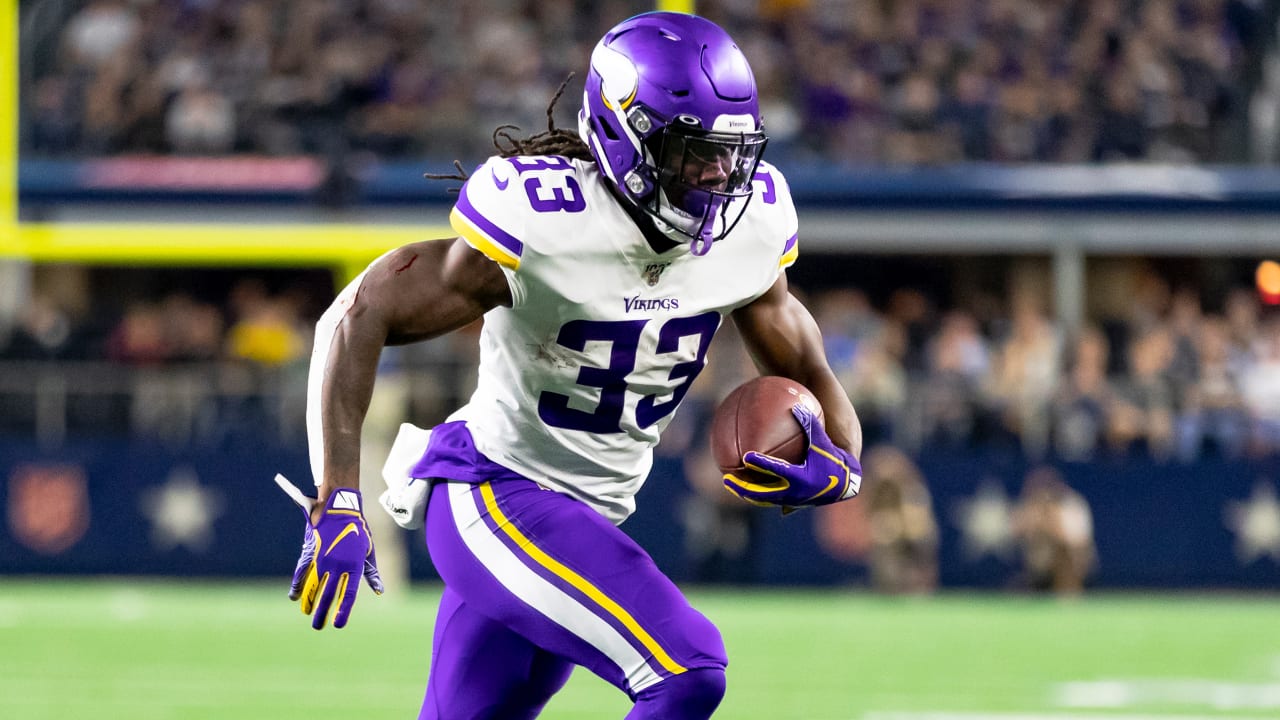NFL Game Scripts Week 1: Green Bay Packers @ Minnesota Vikings
Not only as a divisional game does this have a lot at stake, but one of these two teams have won the NFC North in all but two seasons in the past decade, with 15 playoff appearances between them in that time span. Additionally, both the Green Bay Packers and Minnesota Vikings have been built on offense to take advantage of the other team’s defensive weaknesses. With every win between these two teams essential to winning the division, here’s what we are likely to see on game day.
Vikings Offense vs. Packers Defense
The Run Game

With Gary Kubiak as OC, the Vikings look set to have a run-heavy/play-action offense that focuses on RB Dalvin Cook, instead of QB Kirk Cousins. The Vikings were 6th in rushing yards last season, and when they played at home against the Packers, they had almost 200 rushing yards. In contrast, they had only 57 rushing yards without Dalvin Cook in the return match at Lambeau Field. In 2019, the Packers were the 10th worst in terms of rushing yards allowed, and 8th worst in yards per carry allowed. Having done little to address this in the draft or free agency, while the Vikings retain an above-average run-blocking OL, this should be where the Vikings look to move the ball.
Although the Packers have one of the league’s better Nose Tackles in Kenny Clark, the Vikings can help Center Garrett Bradbury to push him out of the way with FB CJ Ham. Clearing running lanes through the middle gets the Vikings to the Packers’ LBs and secondary, giving Cook opportunities to add extra yards by running through or around smaller defenders. This also opens up Kubiak’s playbook, as he can implement more play-action or deeper passes if the Packers try to stack the box.
The Passing Game
Minnesota will not only try to lean on the run game, but they’ll also avoid taking shots deep against Green Bay’s best defensive asset; its secondary. Although the Packers were average in terms of passing yards allowed, they allowed the equal-fifth fewest passing TDs. Getting the ball out quickly not only suits the Vikings style, but also limits the Packers’ pass rushers, Za’Darius and Preston Smith, time to get to Cousins.
It wouldn’t be surprising to see the Vikings use similar formations to the 49ers’ from 2019, as Kubiak and Kyle Shanahan both served under Mike Shanahan earlier in their careers. Using Ham to block on passing downs, as well as TEs Irv Smith Jr and Kyle Rudolph, gives Cousins the time he needs to read the field. Not only that, but they can move either TE around to become a receiving option, or audible plays to go back to the run in 22 personnel.
Disguising their plays with versatile formations should limit the Packers’ defense from teeing off on Cousins as well. The Vikings were among the teams with the fewest snaps with 3 WRs on the field in 2019, and they are set up to continue that in 2020. Using Adam Thielen out of the slot or on the outside means they can move players around to expose coverage mismatches, and to free up space for short and intermediate throws.
With a play-action system, expect to see Thielen and the TEs running crossing and in routes for underneath throws, so that the DBs can’t get between the ball and the receiver. Once Green Bay starts compressing the field, the Vikings can attack downfield with Thielen and rookie Justin Jefferson, using Cook as a release option with curls and hitches. The Packers can try to combat this by either using a player like Safety Darnell Savage as an extra blitzer, or going all out to stop the run and force Cousins to beat them in the air, trusting their man-to-man coverage with single high safety looks. This is a dangerous way to play though, as any broken coverages or failures to bring down Cook or Cousins exposes them to conceding big gains.
What should we expect to see on Sunday?
Fundamentally, the Vikings will run down the throats of Green Bay to get to the second level, and disguise their formation with easily moveable pieces. This allows the Vikings to change their plays to take advantage of mismatches with the defense, and either run play-action and move the ball with short passes, or if Green Bay stay in nickel formation continue to move the ball on the ground. The Vikings will sparingly look for big plays, as they also will try to limit Green Bay’s time of possession.
Packers Offense vs.Vikings Defense
The Passing Game
If the Vikings’ offense matches up well against Green Bay’s defense, so does the Packers’ offense against Minnesota’s defense. Where Green Bay have a strong secondary, Minnesota has cause for concern. Although they may have one of the best Safety tandems in the league, the Vikings will be relying on at least one rookie at CB in Jeff Gladney, and possibly a second in Cameron Dantzler. While they were both reasonably highly graded in the 2020 Draft, and showed the ability to make plays on the ball in college, it will take some time for them to adjust to the speed of the NFL, especially without a preseason.
To make matters worse (or better for the Packers), the Aaron Rodgers to Davante Adams connection is one of the strongest QB-WR combos in the league. Adams’ route running and separation skills will cause a lot of issues for the Vikings’ CBs, and the Vikings will be forced to bracket him with either Anthony Harris or Harrison Smith in order to contain him.
Forcing the Vikings to play double coverage at times, if not often, opens up the rest of the field for Rodgers to dissect. Although his receiving corps was underwhelming at times last season, if he has finally found chemistry with WRs Marquez Valdes-Scantling and Equanimeous St. Brown, and can build on the small success with WR Allen Lazard and TE Jace Sternberger that flashed last year, the Vikings will have a difficult time slowing down the aerial attack of the Packers.
The Vikings may look to shift to zone coverage this season, which will give Rodgers windows to hit his targets, but will restrict big plays, and gives the pass rush an extra second to get to Rodgers. Green Bay is likely to have either three or four WRs on the field more than many initially expect against the Vikings, especially if they think they can take advantage of the inexperience in the Vikings’ back end. With Lazard and St. Brown using their speed to stretch the field, Adams should have a field day working the middle of the field and using the full extent of his route tree.
The Running Backs
However, despite the apparent mismatch the Packers have in the passing game, HC Matt LaFleur will want to continue making the team more balanced. Although RB Aaron Jones led the league with 19 TDs (as did Christian McCaffrey) last year, he barely had 1000 yards as a rusher. Green Bay drafted RB AJ Dillon to be the workhorse between the tackles, but without a preseason Jones should see the bulk of the carries in Week 1. The Vikings defense was solid against the run as well in 2019, allowing the third-fewest rushing TDs, so there shouldn’t be much success for the Packers on the ground.
Jones also gives the Packers an added advantage that Dillon doesn’t, as he becomes a reliable check-down option in the flats and with swing routes. Minnesota may be without Danielle Hunter, but new acquisition Yannick Ngakoue coming off the edge is still a scary proposition. However, if Jones gets outside of them and Rodgers finds him, he’ll have space to run after the catch.
The Vikings should instead sit back and bring only a minimal pass rush, keeping the ball in front of them. Taking away short passes to Jones, and consequently increasing riskier plays, could be enough for Minnesota to get a few stops. Moreover, with LBs Eric Kendricks and Anthony Barr sitting behind the DL, the Vikings have extra insurance for defending short passes, especially over the middle.
What should we expect to see on Sunday?
Green Bay will look to capitalise on their receiving advantage and get Adams into single coverage, with frequent deep shots to Lazard and St. Brown on the outside. The fourth and fifth receiver, whether Sternberger, Valdez-Scantling or Jones, will be freed up to make plays in space.
Even with a zone-based scheme, the Vikings will need to shift coverage towards Adams, and after being beaten deep once or twice will leave bigger gaps in the middle of the field. The Packers may try to run the ball early on, and while they’ll never abandon the run completely, they’ll be using their best asset in Rodgers to pick apart the defense.
How will this game be decided?
What this game comes down to is Minnesota controlling the clock and Kirk Cousins making throws when it counts. Green Bay’s quick-strike offense will keep them in the game, but the Vikings’ DL will get home a few times to sack Rodgers, whereas the Packers may not be so lucky. Additionally, if the Packers’ offense doesn’t give its defense enough time on the field, late in the game they could be worn out, giving the Vikings another advantage.
This will be a close game, and as good as Rodgers is, it’s a tall order for him to overcome all the deficits his team has, whereas the Vikings have multiple players that can mask their deficiencies. Both teams will find the red zone, but converting chances to TDs favours the Vikings due to their versatility on offense. I have Minnesota winning a close one to get an early jump on the division.

